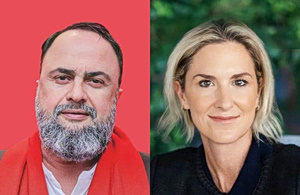The brutal logic of war is once again on full display in Syria: another stage of escalation is unfolding, one that is unlikely to be the last. Over the weekend, Aleppo, Syria’s second-largest city, fell into the hands of Islamist fighters for the first time in a decade after brief skirmishes. According to news agencies, forces loyal to dictator Bashar al-Assad hastily retreated, abandoning the strategically and symbolically significant metropolis with little to no resistance.
Syria, due to its proximity to Israel and its pivotal geopolitical position, remains deeply enmeshed in the broader Middle East conflict. Since the outbreak of the civil war in 2011, proxy wars have raged on multiple fronts, driven by various external actors pursuing their own strategic objectives. These powers have forged alliances with local ethnic or religious factions, exacerbating Syria’s internal divisions. The internationalization of the civil war has further entrenched domestic conflicts, complicating any prospects for peaceful coexistence in a postwar era—a scenario that remains a distant prospect.
At the forefront of external actors is Iran, which coordinates the so-called “Axis of Resistance” against Israel, with the Assad regime and Lebanon’s Hezbollah playing central roles. For Tehran, Israel is the archenemy, and the sentiment is mutual. For months, Israel has been waging a shadow war against Iran’s Revolutionary Guards and Hezbollah on Syrian soil. An Israeli airstrike on the Iranian consulate in Damascus in April killed several high-ranking Iranian military officials, prompting Iranian retaliation with missile strikes on Israeli targets.
Alongside Iran, Russia remains the Assad regime’s most critical pillar of support. Assad’s military successes in recent years have largely been due to the Russian air force. However, cracks are now appearing in the regime’s foundation: Russia needs its military resources for its war against Ukraine and has withdrawn personnel and equipment from Syria. Experts describe the remaining Russian forces in Syria as “second-rate.”
The United States is also heavily involved, maintaining a military presence in northeastern Syria and supporting the Syrian Democratic Forces (SDF), predominantly Kurdish. The SDF controls roughly a third of the country and has urgently deployed units to protect Kurdish areas in Aleppo.
Turkey, viewing Syria as its most strategically important neighbor, is determined to prevent the emergence of a Kurdish-controlled autonomous zone along its border. Ankara has waged an unofficial war in northern Syria for years, occupying territory across the border in violation of international law. Turkey’s policy is bolstered by the Syrian National Army (SNA), a coalition of Islamist militias funded and directed by Ankara. The SNA plays an active role in the current offensive against Syrian government forces, further diminishing the prospects for diplomatic rapprochement between Ankara and Damascus.
Among the most prominent forces now spearheading the offensive is Hayat Tahrir al-Sham (HTS), an extremist militia that controls large swaths of Idlib province. This region is home to approximately four million people, the majority of whom oppose the Assad regime. Internationally classified as a terrorist organization, HTS is a fierce enemy of the Assad regime, Hezbollah, and Iran.
The situation in Syria remains opaque and highly complex. The most pressing questions revolve around the future of the Assad regime and the feasibility of cooperation among the various armed groups should the dictator fall. Experts remain skeptical: it seems more likely that Syria would descend into new power struggles following any regime collapse, with various groups relying on the support of their foreign sponsors—a recurring pattern in Syrian history.
The current escalation is yet another testament to Syria’s entanglement in an international proxy war, which has ensnared the country in a spiral of violence. Whether and when a sustainable political solution can be achieved remains uncertain, given the myriad and profound interests of both local and international actors.
Dr. Ronald Meinardus is a Senior Research Fellow at the Hellenic Foundation for European and Foreign Policy (ELIAMEP).





